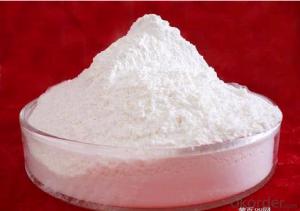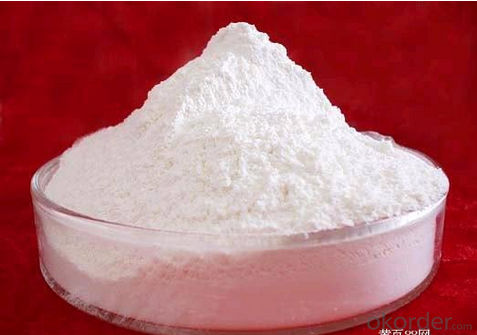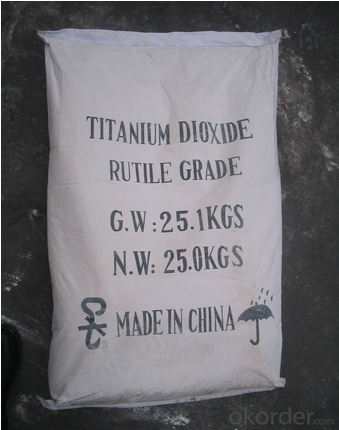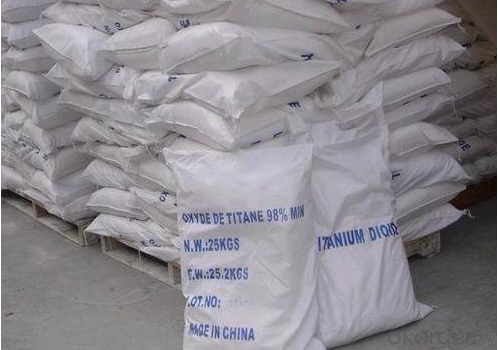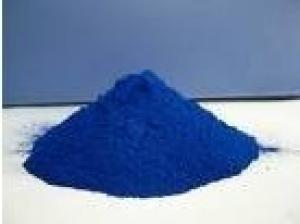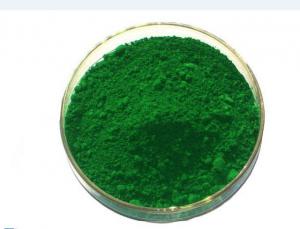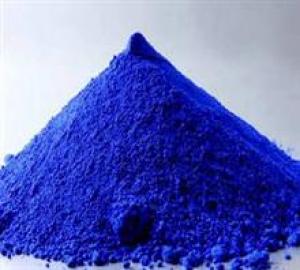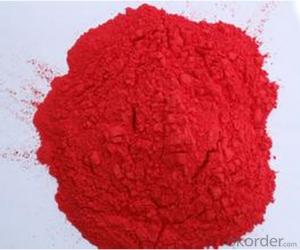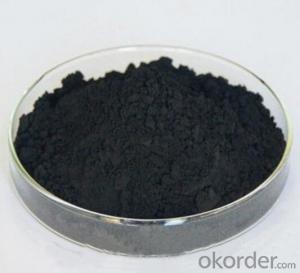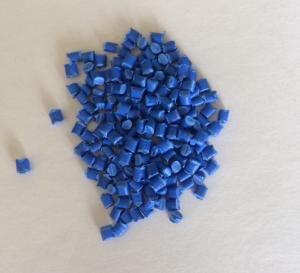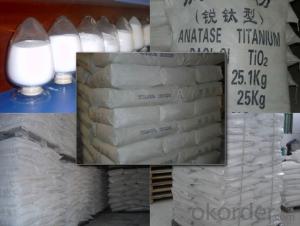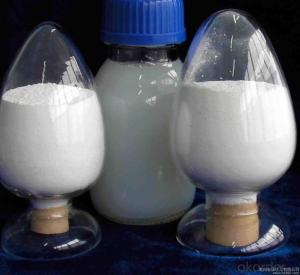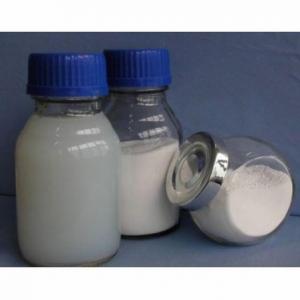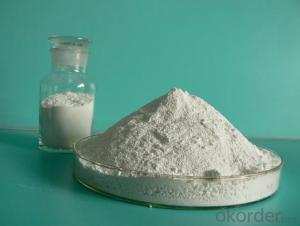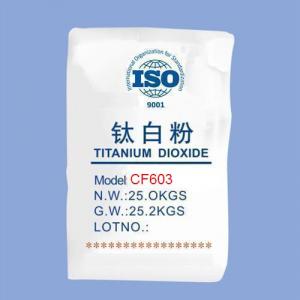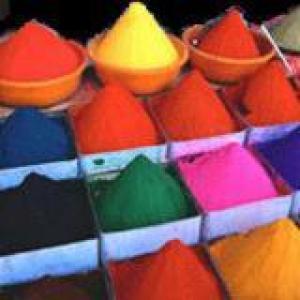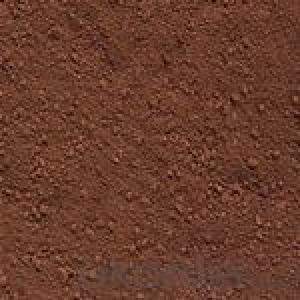Titanium Dioxide Tio2 Rutile Grade in white Powder
- Loading Port:
- Tianjin
- Payment Terms:
- TT OR LC
- Min Order Qty:
- 1000 kg
- Supply Capability:
- 1000000 kg/month
OKorder Service Pledge
OKorder Financial Service
You Might Also Like
Product introduction:
Titanium pigment called titanium dioxide is a kind of white pigment, with non-toxic, best best whiteness and brightness, opacity, is regarded as the performance in the world today one of the best white pigment, widely used in coatings, plastic, papermaking, printing ink, chemical fiber, rubber, enamel, ceramics, electronic ceramics, glass, alloys, welding wire, cosmetics and other industrial.
It has Rutile type titanium Rutile (R) and sharp type (Anatase type A) two types of structure, the Rutile crystal structure is compact, stable, small optical activity, and good weather resistance, and have higher hiding power, decolorization, and therefore have A better application performance, get more extensive application
Main features:
Superfine particle size
Excellent dispersion High tinting power High whiteness
Application: titanium dioxide tio2 widely used in decorating paper,paints,ink,masterbatch,it is especially suitable for paper making and aqueous emulsion paints.
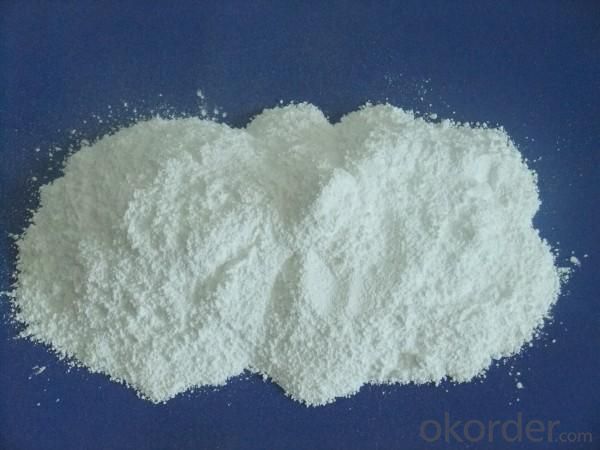
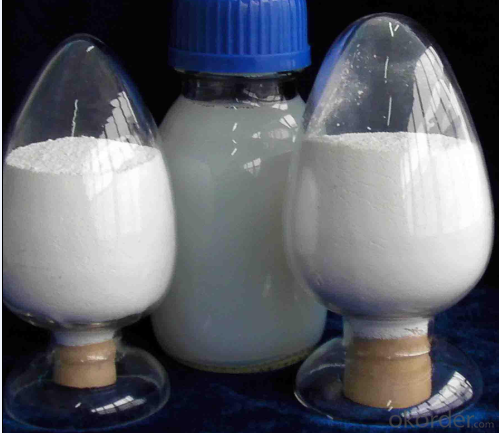
Packaging:
Packed in 25kg PP/paper bag,22MT/1*20'FCL for rutile/anatase titanium dioxide/tio2 for high grade ceramics
Specifications:
Item | Index |
TiO2 content % | ≥92 |
Specific Gravity | 4.1 |
Tinting strength | ≥1800 |
Oil absorption | ≤20 |
PH | 6.5-8.0 |
Whiteness % | ≥97 |
Volatile Matter % | ≤0.3 |
Dispersibility(Hegman) | ≥6.0 |
Average particle size µm | ≤0.29 |
Rutile content % | ≥98 |
Application: titanium dioxide tio2 widely used in decorating paper,paints,ink,masterbatch,it is especially suitable for paper making and aqueous emulsion paints.

- Q: Are carontenoids and anythocyanin accesory pigments.
- Accessory Pigments
- Q: like what's the definition relating to sunlight
- Pigments are substances which are used familiarly to create pictures and printings. Pigments give an object a color when in a field of incident white light. Pigments themselves absorb a set of incident colors of light and reflect all others. When multiple pigments are mixed, their ability to absorb colors is added, such that their ability to reflect colors is subtracted.
- Q: list 5 mineral pigments and 5 animals pigments and how its produced
- Mineral Pigments: Lazurite (Lapis Lazuli), Vivianite (Blue Ochre), Riebeckite, Glauconite, Malachite, Jarosite, Limonite, Hematite, Goethite, Celadonite and Shungite Animal Pigments: Tyrian Purple, made from the mucus of a Murex snail Carmine, made from an insect in central and south America, called Cochinilla Natural indigo, made from plants of the genera Indigofera Rose madder, a pigment derived from the plant Rubia tinctorum Gamboge, I think is a dark type of mustard (seeds) Alizarin occurs in the root of the common madder (Rubia tinctorum) and in various parts of Indian madder (Rubia cordifolia). And regarding how they are produced, well each one has it?s own methods. You may want to search each of those names and you can find information for each one. Hope this helps, Bella
- Q: PLEASE TRY!, to awnser ANY of the questions below.~What factors cause leaves to change colors. Where do these colors come from?~What are the names of the specific chemical pigments that cause the colors we see (reds, yellows, purples, browns, greens etc.) These are the same pigments (chemical that causes color) that give fruit their different colors.~What is the process (how it happens) that cause leaves to fall off of the branches. Explain at the cell level. (picture)Please try to awnser. Thanks.
- Chlorophyll leaves and Tannin enters,depends on the temperature and seasons
- Q: Compare and contrast pigment color with the color seen from a light. What is the difference between mixing pigment colors and mixing light colors?
- you notice pigments the colour you notice them, using fact they replicate a spectra of sunshine, with particular frequencies, and take up all others seen to the human eye. in case you combine distinctive monochromatic mild with distinctive colours (as seen on the television: purple, green and blue it quite is referred to as additive mixing, or magenta, yellow and cyanide that's the different technique) your retina will upload the colors up, and experience it as a distinctive shade. (by skill of including each and all of the three colours on an identical intensity, you are able to create white mild) while mixing pigments (they are chemical compounds) you get a clean cloth, which will replicate an different spectra of sunshine, which you will see as a shade
- Q: i was thinking of this all day long and then i thought of posting this question for you to help me sort it out
- plant pigments are of types---- LUCOPLAST- colourless, found in roots, collect food.,,, CROMOPLAST-- Of difrent colour (not green), in flowers atract insect for polination, in fruits atract animals for seed dispers,,,,CLOROPLAST-- Convert light energy to chemical energy, in leaves and otner parts....
- Q: what are accessory pigments?
- Accessory pigments are light-absorbing compounds, found in photosynthetic organisms, that work in conjunction with chlorophyll a. They include other forms of this pigment, such as chlorophyll b in green algal and higher plant , while other algae may contain chlorophyll c or d. In addition, there are many non-chlorophyll accessory pigments, such as carotenoids or phycobiliproteins which also absorb light and transfer that light energy to photosystem chlorophyll. Some of these accessory pigments, particularly the carotenoids, also serve to absorb and dissipate excess light energy, or work as antioxidants. The different chlorophyll and non-chlorophyll pigments associated with the photosystems all have different absorption spectra, either because the spectra of the different chlorophyll pigments are modified by their local protein environment, or because the accessory pigments have intrinsic structural differences. The result is that, in vivo a composite absorption spectrum of all these pigments is broadened and flattened such that a wider range of visible and infrared radiation is absorbed by plants and algae. Most photosynthetic organisms do not absorb green light well, thus most remaining light under leaf canopies in forests or under water with abundant plankton is green, a spectral effect called the green window. Organisms such as some cyanobacteria and red algae contain accessory phycobiliproteins that absorb green light reaching these habitats. For more kindly click on the links below --- en.wikipedia.org/wiki/Accessory_p... en.wikipedia.org/wiki/Photosynthe...
- Q: If they are not the same, then what is the difference? Please help me out here.
- Yes, tannins are pigments but they aren't really the main plant pigment. Plant pigments usually refer to photosynthetic pigments (chlorophyll, carotenoids, etc.). These photosynthetic pigments give the leaves their green color (or yellow/orange in the fall). Tannins are non-photosynthetic phytochemical (involved in plant metabolism and internal functioning), but they are also a pigment. Tannins (and lignins) are brown. This is was gives dead leaves and wood their color. Tannins also leach out of the leaves when soaked in water (same process as brewing a cup of tea). So tannins are pigments when they leach out of leaves and stain water (or other things) brown, but they are not photosynthetic plant pigments. In other words, it depends on what context you are calling a tannin a pigment. In a live plant they are not a pigment (judgment call here). In a dead leaf or when they leach out of a leaf they are a pigment.
- Q: i got some pigments off of ebay and i received two of them but they have a funny smell to them? are they supose to?
- Are you sure they are real mac pigments. Look on the bottom to see if they have names. If not, if they just have a number and not a name, then they are fake and thats probably the cause of the smell. If so, then I don't know. Mine never do. Hope this helps and good luck!
Send your message to us
Titanium Dioxide Tio2 Rutile Grade in white Powder
- Loading Port:
- Tianjin
- Payment Terms:
- TT OR LC
- Min Order Qty:
- 1000 kg
- Supply Capability:
- 1000000 kg/month
OKorder Service Pledge
OKorder Financial Service
Similar products
Hot products
Hot Searches
Related keywords
